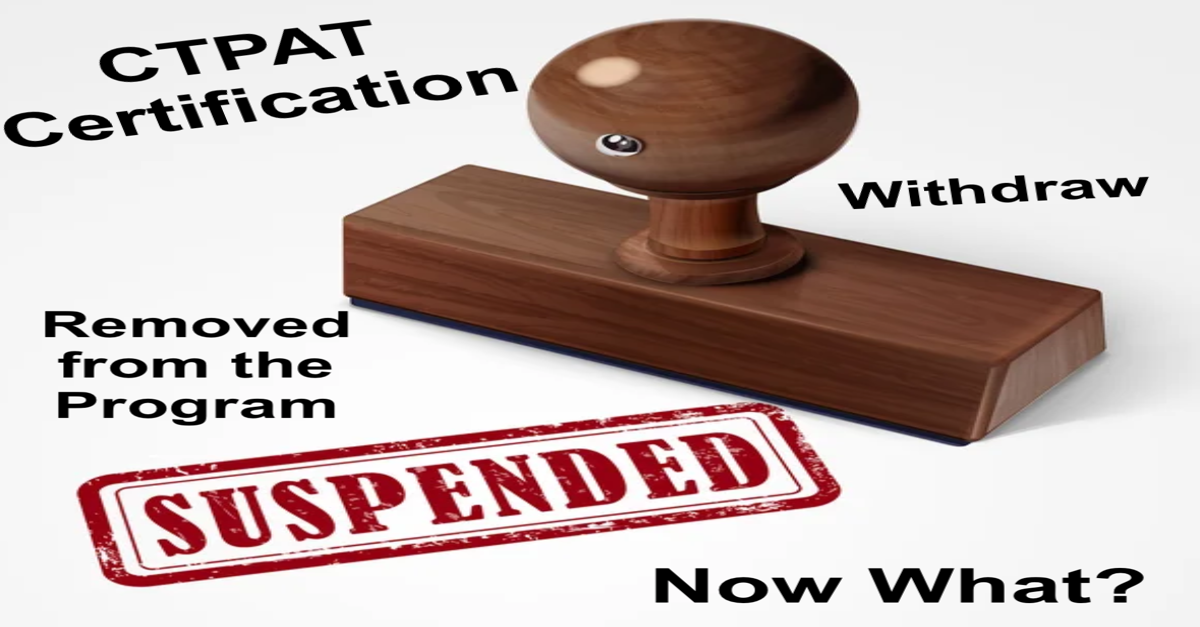Thinking About Joining CTPAT? What to Know Before You Apply
Navigating the world of international trade comes with its fair share of complexities—especially when it comes to securing your supply chain. That’s...
2 min read
Cherie Patrick : Jul 21, 2025 3:33:53 PM

The Customs Trade Partnership Against Terrorism (CTPAT) program is a vital component of U.S. Customs and Border Protection’s efforts to secure the global supply chain. While participation in the program offers significant benefits including reduced inspections, expedited processing, and access to trusted trader programs - it is also a privilege that must be actively maintained.
Let's explore the key distinctions between Withdrawal, Suspension, and Removal from the CTPAT program, helping members understand the implications and how to avoid losing their membership.
Voluntary Withdrawal from CTPAT:
A withdrawal occurs when a partner chooses to leave the program on their own accord. This is a formal process initiated by the partner, not CBP.
Common Reasons for Withdrawal:
How to Withdraw:
Implications:
Suspension from CTPAT:
A suspension is a temporary action taken by CBP when a partner fails to meet the program’s minimum security criteria or becomes non-responsive.
Common Triggers:
Consequences of Suspension:
Reinstatement Process:
Removal from CTPAT:
Removal is the most serious action and signifies the termination of a partner’s membership. This may follow unresolved suspension issues or egregious violations of program requirements.
Grounds for Removal:
Effects of Removal:
Reapplying After Removal:
In Summary
Participation in CTPAT is a sign of a company’s commitment to secure trade and customs compliance. Withdrawal, suspension, and removal from the program not only eliminate access to key benefits but may also impact business credibility and customer trust.
To remain in good standing:
At Veroot, we help companies maintain compliance and avoid these pitfalls through expert consulting and comprehensive security planning. If you’re unsure about your CTPAT status or need support during a suspension or reapplication, we’re here to help.
For more information or to request a demo, visit Veroot's website at www.veroot.com/ctpat


Navigating the world of international trade comes with its fair share of complexities—especially when it comes to securing your supply chain. That’s...

Did you know that CTPAT certified companies can lose their CTPAT certification if their business partners fail to comply with CTPAT security...

In today’s global trade world, having a secure warehouse is not just about keeping your cargo/inventory safe, it’s a major part of staying Customs...